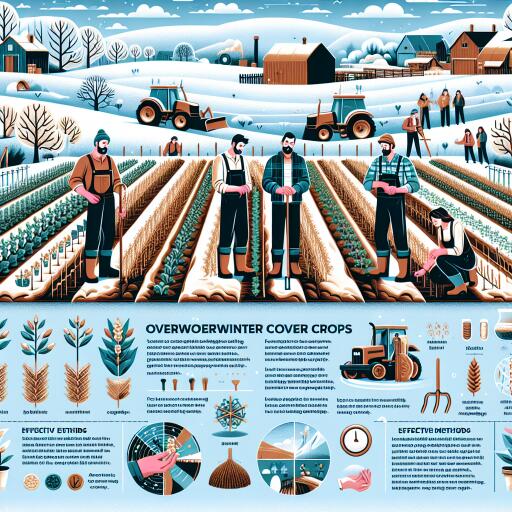
Maximizing Benefits from SAM2 Overwinter Cover Crops in Sustainable Farming
Innovative farming practices have increasingly embraced overwinter cover crops, recognizing their varied success across different terrains and climates. These green practices not only bolster soil health during the harsher winter months but are also a cornerstone of the Sustainable Farming Incentive (SFI) scheme, showcasing dedication to ecological stewardship and resource efficiency.
With a significant stretch of farmland now under the Sustainable Farming Incentive’s SAM2, the strategic implementation of cover crops has emerged as a pivotal element in the farmer’s arsenal against soil erosion and nutrient leaching. Moreover, the additional support from Countryside Stewardship agreements and potential private subsidies highlight a trend towards these eco-friendly agronomic practices.
The principle behind deploying multispecies cover crops through winter is straightforward yet impactful: safeguard the surface layer of the soil from extreme weather fluctuations, minimize erosion, and enhance nutrient retention. This practice not only sustains the agricultural landscape but also translates into substantial savings by conserving soil nutrients.
The introduction of these crops goes well beyond surface protection; they are instrumental in fortifying soil structure by nurturing soil biology—a critical component for sustainable soil health. Cover crops contribute to the soil ecosystem by releasing root exudates, fostering a habitat that bolsters organic matter accumulation and enhances natural soil aggregation. This biological activity subsequently reduces the need for intensive tillage, leading towards more sustainable cultivation methods.
An added dimension to the utility of cover crops is their facilitation of livestock integration into crop rotations, presenting a harmonious approach to land management when timed appropriately.
Establishment and Selection for Optimal Performance
Success with cover crops heavily relies on timely planting, ideally immediately following the harvest of the preceding crop. Early sowing capitalizes on residual moisture and maximizes the developmental window before the onset of winter, enriching the soil with beneficial organic matter.
While broadcasting seeds into standing crops or directly following the combine harvest are tactics employed by some, the consensus leans towards drilling or incorporating seeds for uniform cover and interception. Implementing at least two, ideally three or more, diverse species from distinct plant families can amplify the benefits, drawing on cross-family synergies to enhance soil biology and functionality.
The choice of species is paramount, influenced by factors such as rotational plans and preceding crop type. The strategic selection can facilitate smoother transitions to successive crops, optimizing soil conditions for planting and ensuring nutrient availability. For example, incorporating leguminous plants in the mix can expedite nutrient recycling and soil preparation for spring planting.
Conversely, consideration must also be given to crop termination timings, especially leading into spring cereals, to avoid potential yield impacts. The balance between maintaining cover and preparing for the next cash crop is delicate, necessitating keen judgment on the farmer’s part.
Points of Consideration
When designing a cover crop strategy, it’s crucial to deliberate on potential implications for future crops. This includes avoiding species that may harbor pests or diseases relevant to the next crop in the rotation, and selecting species that contribute positively to the farm’s overall pest and disease management plan.
Furthermore, cover crops serve as a testament to agriculture’s evolving relationship with the environment—a proactive step towards sustainability. Their role in capturing and recycling nutrients, reducing erosion, and improving soil health exemplifies the multifaceted benefits of integrating cover crops into modern farming practices.
As the agricultural sector continues to move towards more sustainable and regenerative practices, the strategic use of cover crops stands as a testament to the industry’s adaptability and commitment to environmental stewardship. The richness of biodiversity below the ground is as crucial as the crops we grow above it, and through mindful management, farmers can reap the dual benefits of ecological conservation and enhanced farm productivity.





Leave a Reply